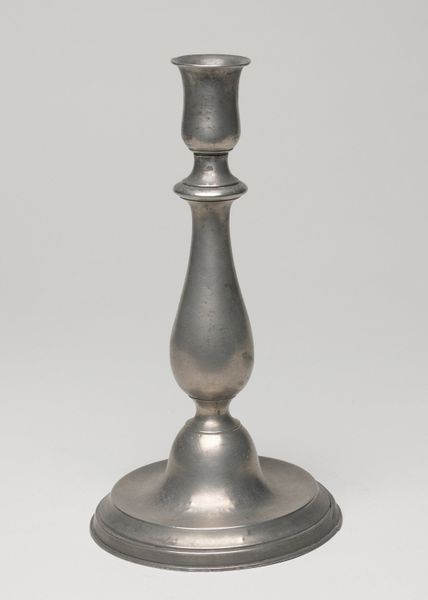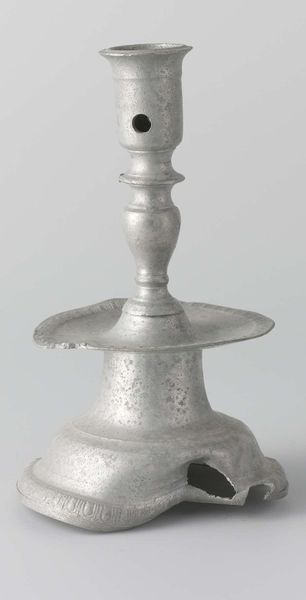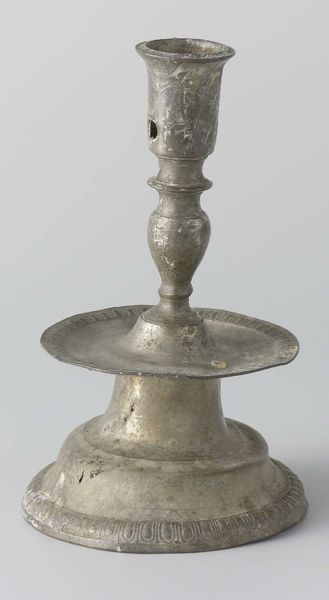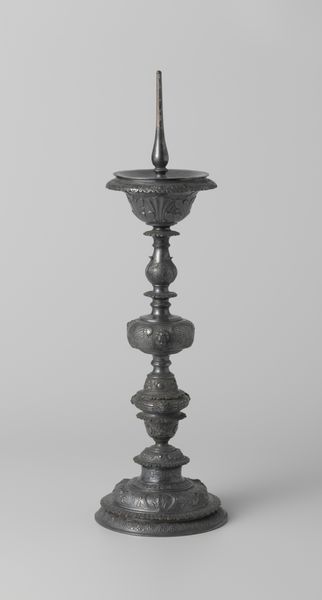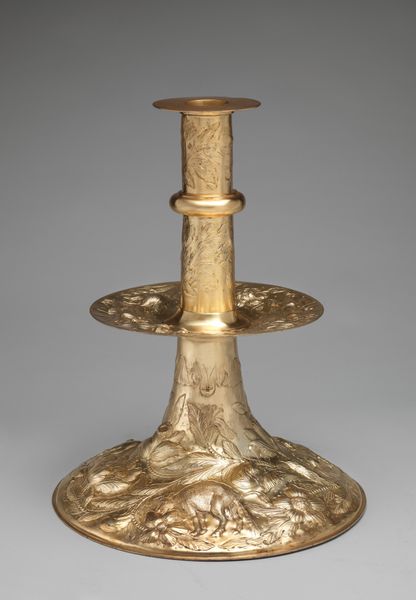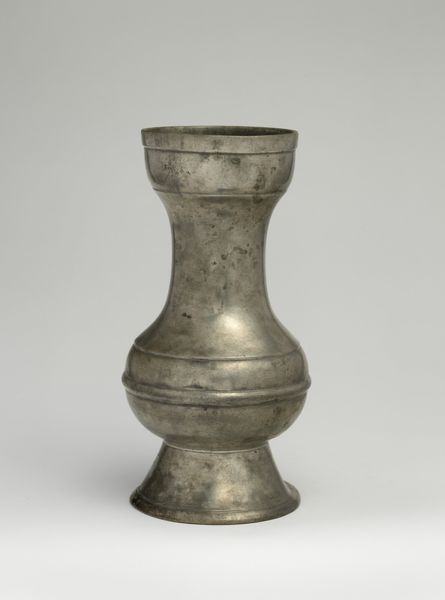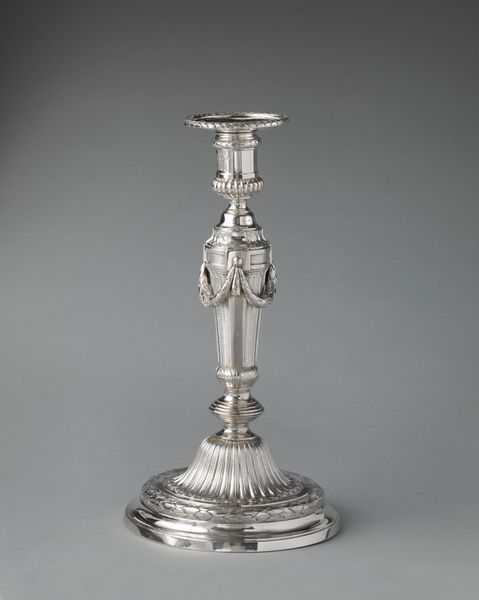
metal, ceramic, sculpture
medieval
metal
ceramic
11_renaissance
sculpture
ceramic
Dimensions: height 20.4 cm, diameter 11.7 cm
Copyright: Rijks Museum: Open Domain
Editor: So, here we have "Merchandise," a candlestick from around 1590 to 1596, by an anonymous artist, currently held at the Rijksmuseum. It’s crafted from metal and perhaps some ceramic. It has such a utilitarian feel. What's your take on this piece? Curator: What interests me immediately is the material. Metalwork, particularly in the late 16th century, represents a significant shift in artisanal production and the widening availability of goods. This isn't just a candlestick; it's a symbol of increased commodity culture. Editor: A symbol, really? Curator: Absolutely. Consider the labor involved in extracting, refining, and then shaping the metal. Was this piece mass-produced or made by a single artisan? That affects its status. Look at the visible wear and tear – these aren't just imperfections; they tell a story of use and consumption, part of the object's biography. Editor: That's true; you can almost imagine its life. But does its being functional reduce its artistic value? Curator: On the contrary, it enhances it. By engaging with a traditionally domestic object, we interrogate the supposed divide between "high art" and "craft". Was the craftsman aware of artistic trends? What sort of workshop was it made in? These aspects make the work particularly compelling. Editor: I hadn't thought about it that way before. Focusing on its materials really opens up new questions. Thanks! Curator: My pleasure. Now you can perceive it for its socio-historical values, embedded in its physicality.
Comments
Barentsz and his crew were en route to China, and therefore brought along goods they could use to conduct trade there. They obviously expected these pewter candlesticks to be in demand in Asia.
Join the conversation
Join millions of artists and users on Artera today and experience the ultimate creative platform.





